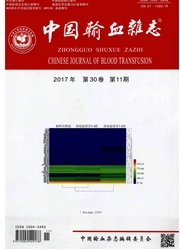

 中文摘要:
中文摘要:
Haemovigilance(HV)作为输血医学领域的1个新的监测手段,通过系统收集血液制品采集制备生产和临床应用中发生的可预期和不可预期的输血相关不良事件和输血反应信息,对血液相关的危险和危害征兆做一系列监控。随着在欧洲的广泛应用和对采供血机构的质量管理和临床输血管理等过程所发挥重要作用以及所取得的瞩目成绩,HV已被国际输血行业公认为血液质量管理的1个新的有效工具。为此,WHO、ISBT和国际HV联盟(Inter.nationalHaemovigilanceNetwork,IHN)为核心的国际HV组织密切合作,开展了包括依据已有的数据、结果和工作程序为全球HV一体化提供国际数据报告框架,制定统一报告标准等工作,以最终实现全球数据的可比性和共享。以法国的HV系统、英国的SHOT(SeriousHazardsofTransfusion,SHOT)系统和美国的Biovigilance(BV)系统为代表的国际上主要的HV体系,其运行模式和成功经验不仅积极推动了全球HV工作的发展,也值得我国输血行业在完善和提高输血质量管理方面借鉴和学习。
 英文摘要:
英文摘要:
As a new tool of transfusion medicine surveillance, hemovigilance (HV) monitors the risk and harm related to the blood transfusion by collecting the incidence of expected and unexpectedadverse events and adverse reaction during the blood product collection, preparation and infusion. With its widely application in Europe, HV plays an important role both in the process of blood quality management and clinical transfusion management. Seeing that HV has made impressive achievements, it has been recognized as a new and effective blood quality management tool in the international transfusion industry. Therefore, WHO,International Society of blood transfusion and IHN (International Hemovigllance Network) cooperate closely, to expand the existing data, results and operation procedures in order to provide an international data reporting framework for global HV integration and to formulate consistent reporting standards in order to enhance the tools to compare and share global data. The HV system of France, SHOT system of England and Biovigilance system of America represent the main HV systems in the world. Their operation modes and successful experiences not only actively promote global HV work, but also will certainly provide reference for Chinese blood transfusion industry to improve the quality of blood transfusion management.
 同期刊论文项目
同期刊论文项目
 同项目期刊论文
同项目期刊论文
 期刊信息
期刊信息
